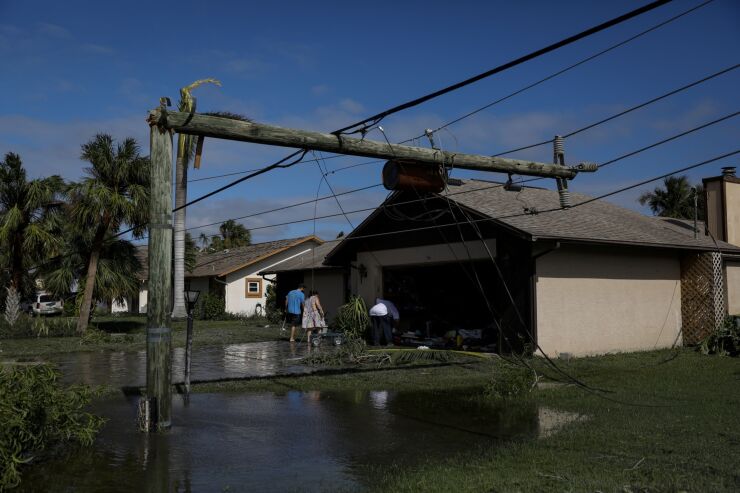After Hurricane Ian made landfall in on the Florida panhandle on September 28, as a Category 4 storm, property and casualty insurers and reinsurers set to work to glean estimates of losses that homeowners and commercial property owners will incur.
Those numbers are not clear yet, at least to observers in the capital markets. Damages, and insured losses from Hurricane Ian are likely to arise from homeowners, commercial property and business interruption coverage, according to a comment on the property & casualty sector from Moody's Investors Service, "P&C insurers and reinsurers brace for losses as Hurricane Ian makes Florida landfall."
After striking Florida, the National Hurricane Center downgraded Ian to a Tropical Storm. The storm, however, is projected to strike coastal areas of South Carolina, Georgia and North Carolina, according to media reports. The National Hurricane Center had already issued a warning for the entire coast of South Carolina on Thursday.
The reinsurance market is expected to absorb much of the storm's expected losses. Florida is a peak catastrophe zone for reinsurers, according to Moody's, and Hurricane Ian was the largest storm to strike Florida since 2018. That year, Hurricane Michael struck Florida as a Category 5 storm, incurring estimated losses of around $9.1 billion, according to Moody's analysts who authored the report, citing figures from the Florida Office of Insurance Regulation.
Despite not having a precise number to associate with damages, and although damage expenses are expected to be higher due to inflation, analysts expect Florida and its state-sponsored insurance entities are well-prepared to handle the immediate costs and property claims stemming from storm damages.
James Eck, a vice president and senior credit officer at the credit rating agency, led analysts who authored the report.
"FEMA is the key source of aid following a natural disaster," Denise Rappmund, vice president in Moody's Public Project and Infrastructure Finance Group
said in emailed comments, adding that, "much of the costs to repair and rebuild damaged property will be borne by property insurers who will benefit from $2 billion of state-funded reinsurance."
The State of Florida created a $2 billion reinsurance fund in May 2022, which aims to provide reinsurance capacity to the market, in addition to coverage from the National Flood Insurance Program, a division of the Federal Emergency Management Agency (FEMA), according to the P&C sector commentary.
The top 10 insurers domiciled in Florida write about 40% of the state's homeowner's business, with a total of $4.9 billion in premiums written, according to Moody's. Universal P&C and Citizens Property Insurance Group lead those companies in exposure. The Florida Hurricane Catastrophe Fund and the General Reinsurance Cop., lead top 10 reinsurers of Florida-only property insurers, with assumed premiums of about $850 million and about $440 million, respectively.






